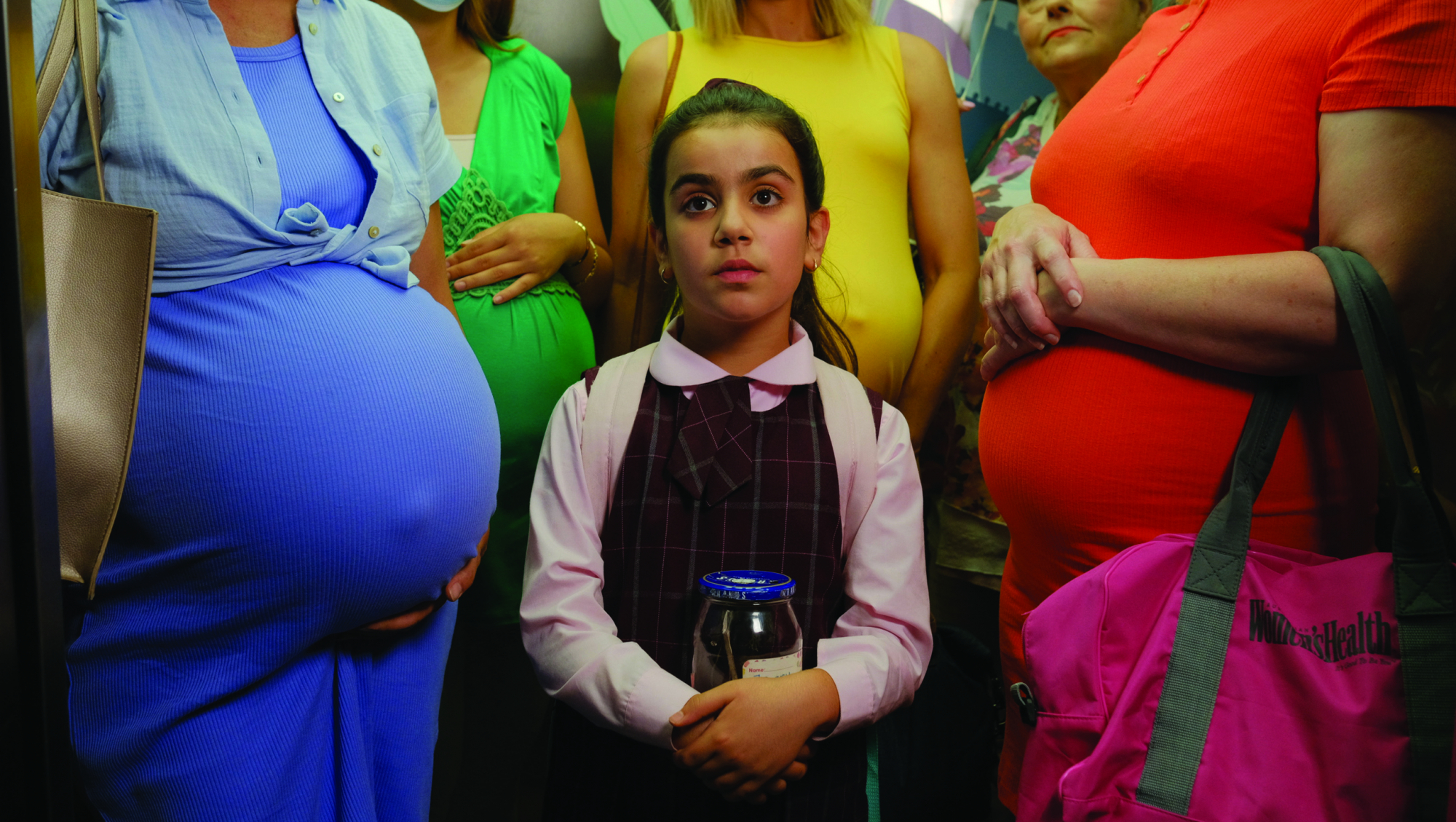One of the more interesting developments in Australian literature over the past decade has been the emergence of Western Sydney as a compelling and urgent literary voice. This suburban milieu has been explored and celebrated as an intoxicating, wildly diverse community, making it a ripe subject and setting – and perhaps even state of mind – in art. Authors such as Peter Polites, Michael Mohammed Ahmad, Vivian Pham, Felicity Castagna and Luke Carman, to name just a few, have been at the vanguard of bringing a passionate and fairly blunt voice to this populace of over 2.5 million people.[1]See ‘Western Sydney (LGA) Community Profile’, .id website, <https://profile.id.com.au/cws>, accessed 22 February 2022.
As well as presenting the cultural diversity and hectic pace of life in Western Sydney, works by these authors define these suburbs by their opposition to their antithesis: the traditional commercial and business centres of the Eastern Suburbs and the CBD, and the hipster domains of the Inner West and Surry Hills. This film – which offers a particularly innovative and poetic treatment of Western Sydney – does the same even by its title alone. ‘Here out west’ implies a call from the margins, a drawing of attention away from those hubs of wealth and fashion and the glamorous landmarks that the city peddles to the world: the Harbour Bridge, the Opera House, Manly Beach and so on.
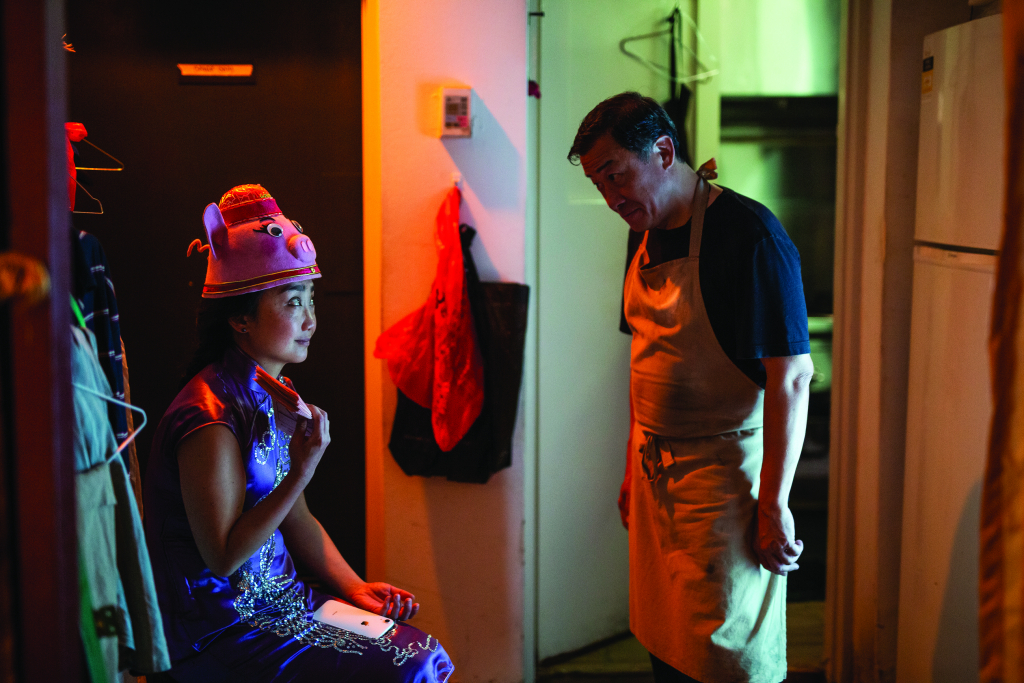
Here Out West (2021) is an ‘anthology’ film, a series of eight economical vignettes featuring characters and plotlines that weave among one another and across various locations in Blacktown – where the film was shot – over the course of a day or so. Scriptwriting comes from eight different writers from a range of backgrounds, and the film features no fewer than nine languages spoken: Arabic, Bengali, Cantonese, English, Kurdish, Spanish, Tagalog, Turkish and Vietnamese.[2]Annabel Davis, Sheila Jayadev & Bree-Anne Sykes, ‘Producers’ Statement’, in Co-Curious & Emerald Productions, Here Out West press kit, 2021, p. 5. Among the five directors involved, familiar and experienced names such as Ana Kokkinos and Leah Purcell rub shoulders with relative newcomers Fadia Abboud, Lucy Gaffy and Julie Kalceff.
This format may remind viewers steeped in American cinema of such works as Robert Altman’s Short Cuts (1993) and Richard Linklater’s Slacker (1990). But the fragmented storytelling is also another link to the contemporary literature of Western Sydney: Carman’s 2013 novel An Elegant Young Man unfolds in a similar way, in this case traversing Liverpool and presenting slice-of-life snippets of the area through the eyes of a cynical but decidedly literary young protagonist. Here Out West perhaps lacks the snarl of Carman’s book, but it does not shy away from the realities of life for ethnic communities in these neighbourhoods.
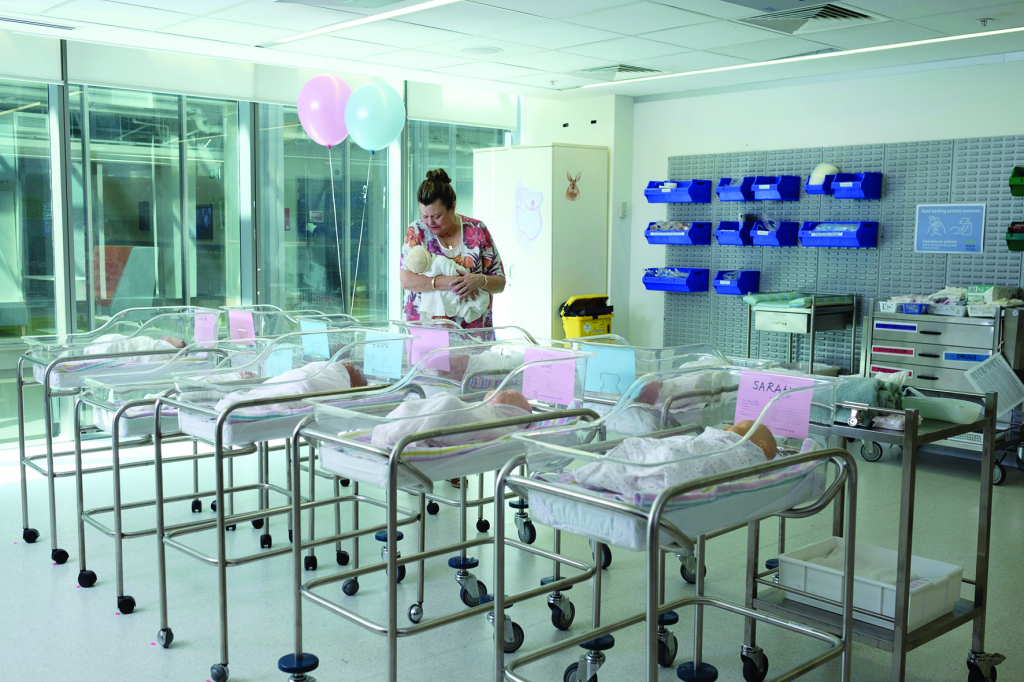
The film’s first section, Gaffy’s ‘We, the Spiders’, is a near-flawless establishment of Here Out West’s tone and mood. The film opens on Nancy (Genevieve Lemon), a woman in late middle age, nervously applying make-up and taking meticulous care over her clothing in her home. She is interrupted by a knock at the front door – the eight-year-old Lebanese schoolgirl she babysits, Amirah (Mia-Lore Bayeh), has arrived to be looked after. Nancy has forgotten about this obligation, and the girl’s mother is already reversing out of the driveway.
Nancy’s mind has been preoccupied by the visit she is about to make – and to which she is now forced to drag Amirah along – to the fictional Western Sydney Central Hospital to see her new grandchild, born to her daughter, who is in prison for an unspecified crime. This opening episode ends with the grandmother kidnapping the baby from the hospital and making a frantic getaway with both children in her car.
The manner in which this scenario is presented typifies the film’s controlled writing, undemonstrative acting, beautifully paced dialogue and overall atmosphere of modest solemnity.
While this set-up is nothing particularly startling, the manner in which this scenario is presented typifies the film’s controlled writing, undemonstrative acting, beautifully paced dialogue and overall atmosphere of modest solemnity. One feels as if having strolled into these people’s lives for a fleeting glimpse of their values, relationships and idiosyncrasies (admittedly, something that is often the case in anthology films by their nature). No dialogue is expository or clichéd, and Lemon’s understated performance is among Here Out West’s outstanding features. Another point of intrigue is the fact that Amirah speaks entirely in her native tongue, yet seems to easily understand English when it is spoken to her – suggesting the possibility that she is speaking Arabic through strong-willed choice.
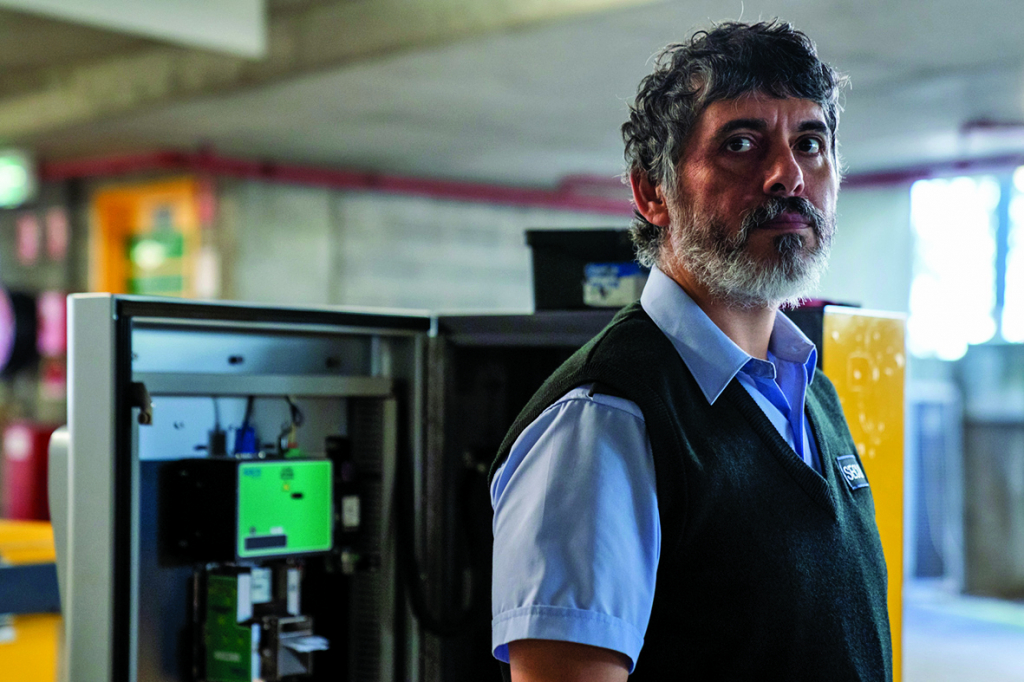
The second story, Kokkinos’ ‘Everything Changes’, focuses on a Chilean security guard, Jorge – played by Christian Ravello, in another of the film’s most soulful performances – who works in the hospital car park. This character is seen dealing with violent car park patrons and negotiating a strained relationship with his Australian-raised son, Felipe (Jaime Ureta), who has lost interest in playing in a soccer team with him. In spare moments at his work desk, Jorge writes poetry (composed in Spanish by this section’s writer, Matias Bolla[3]Confirmed to author by ABC Audiences representative via email.) – another nod to the emergence of Western Sydney as a place where artistic expression is burgeoning in all corners.
The third vignette, Purcell’s ‘Brotherhood’, is arguably the most arresting from a visual or action perspective. The scene opens with three athletic young men – one Bengali, Robi (played by Arka Das, who also wrote this section); one Afghan, Rashid (Rahel Romahn); and one South African, Dino (Thuso Lekwape) – sprinting frantically through the streets of Blacktown. Rashid is chasing Dino because he is angry that Dino has embarked on a romance with his cousin, and Robi is keeping up with them in order to prevent a fight. The trio end up witnessing a hit-and-run (committed by a panicked Nancy, in an example of the interlinking of these storylines), and coming to the injured man’s aid takes them to the hospital, the epicentre of the film’s multiple plotlines. Here, the three friends are reconciled as the larger matters of life and death that they witness put their squabbles into perspective.
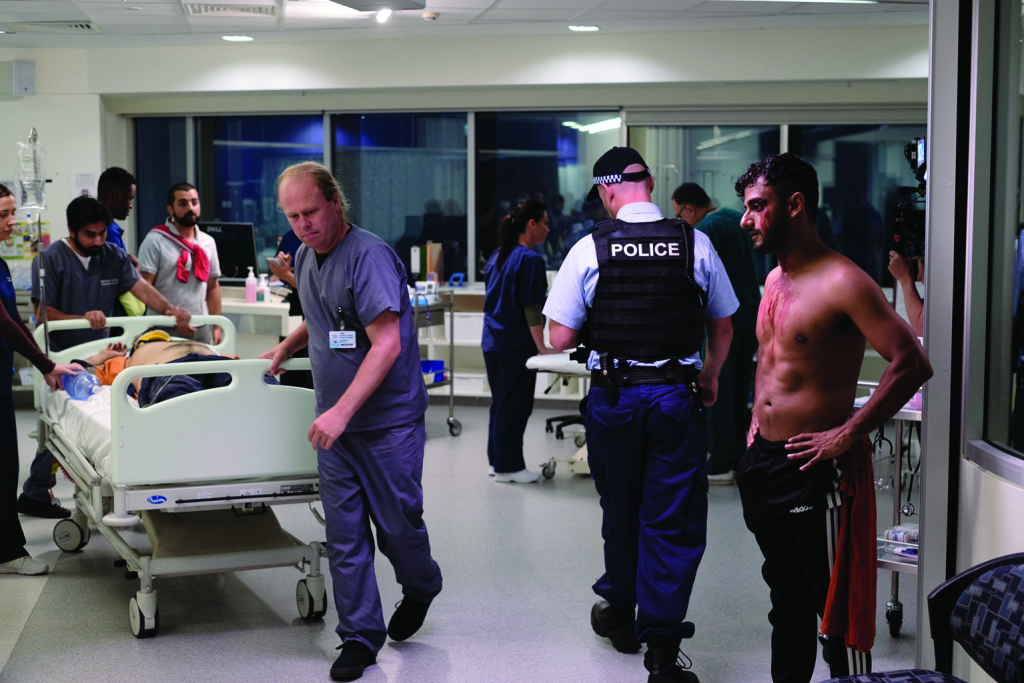
The central themes of these opening three storylines are of family, friendship, loyalty and love – and these are at the heart of all eight vignettes. Indeed, an exploration of such concerns is more to the fore than any preoccupation with multiculturalism or the contrasting ways of life in this part of the world. It is to the film’s considerable credit that at no point does exhibiting the area’s diversity become its overriding preoccupation; instead, it prioritises the universal struggles and challenges inherent in human relationships. The film can certainly be read as political, but these emotional threads leave the stronger impression.
The storylines, for the most part, conclude fairly sedately – some with a note of small triumph (such as Abboud and Kokkinos’ ‘Brother Tom’), catharsis (Purcell’s ‘Closing Night’) or melancholy (Kokkinos’ ‘The Eternal Dance’), while the saga of the stolen baby ultimately resolves safely. A consistent sense of bittersweetness, of emotional ambiguity and complexity, is among the film’s strengths. However, there is one snapshot of immigrant life that is almost unbearably bleak: Abboud’s ‘The Musician’. In this section, we visit the home of Keko (De Lovan Zandy), a Kurdish man from Iraq who is in Australia on a humanitarian visa with his young family. He is preparing to host a wealthy young man, Ibrahim (Soran Khoshnow) – a friend or acquaintance who is also Kurdish – and his wife, Ajda (Pia Thunderbolt). Keko hopes Ibrahim will loan him money to open a music school to teach the bağlama, an instrument that he also makes. The businessman arrives, hears the proposal and essentially laughs in the musician’s face – even barking at Keko’s wife and children for expressing their own dreams and talents – and instead offers Keko a job with his company cleaning bricks. This brash capitalist, perhaps a slight caricature, is by far the most repugnant individual in Here Out West. But he is an important character, as he demonstrates that not everyone in this multicultural melting pot possesses compassion or a community-minded spirit (qualities that are on full display in other vignettes); there are bad eggs here too.
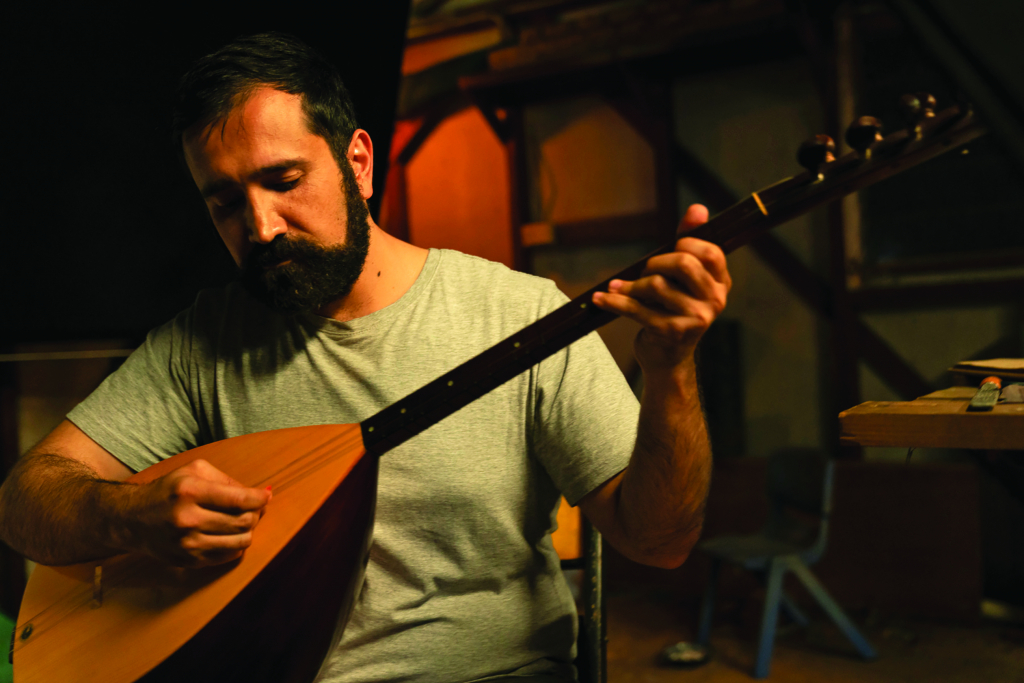
The episode ends with the heartbreaking sequence of Keko turning the light off in his home workshop (and also off on, it is explicitly implied, his dreams), and then being picked up for work at the crack of dawn the next morning, decked out in hi-vis uniform. ‘The Musician’, another nod to the creative arts that lurk behind the curtains in the suburbs of Western Sydney, acknowledges that while Australia may be a place of safety and sanctuary to refugees and immigrants, it is also a place where people often must give up on their passions and ambitions in order to ‘fit in’ or ‘get by’. This theme of sacrifice is explored in another beautifully written and acted sequence, Kalceff’s ‘The Long Shift’, which focuses on Filipina nurse Roxanne (Christine Milo) and the hardships she faces during a shift at the hospital. Her biggest loss is the fact that she is living and working in Australia while her husband and young son remain in the Philippines.
Here Out West contains moments of humour to counterbalance these sadder points. Several of these revolve around language, demonstrating the way Australian vernacular – along with its occasional blunt uncouthness – is adopted by members of minority groups. In ‘The Eternal Dance’, a nurse assumes that an Indian man’s Caucasian wife is merely a visiting friend and not family, prompting his daughter, Ashmita (Leah Vandenberg), to angrily yell at the nurse: ‘They let people from different races fuck now.’ Later, while on the phone, she declares that ‘the reception’s shithouse’.
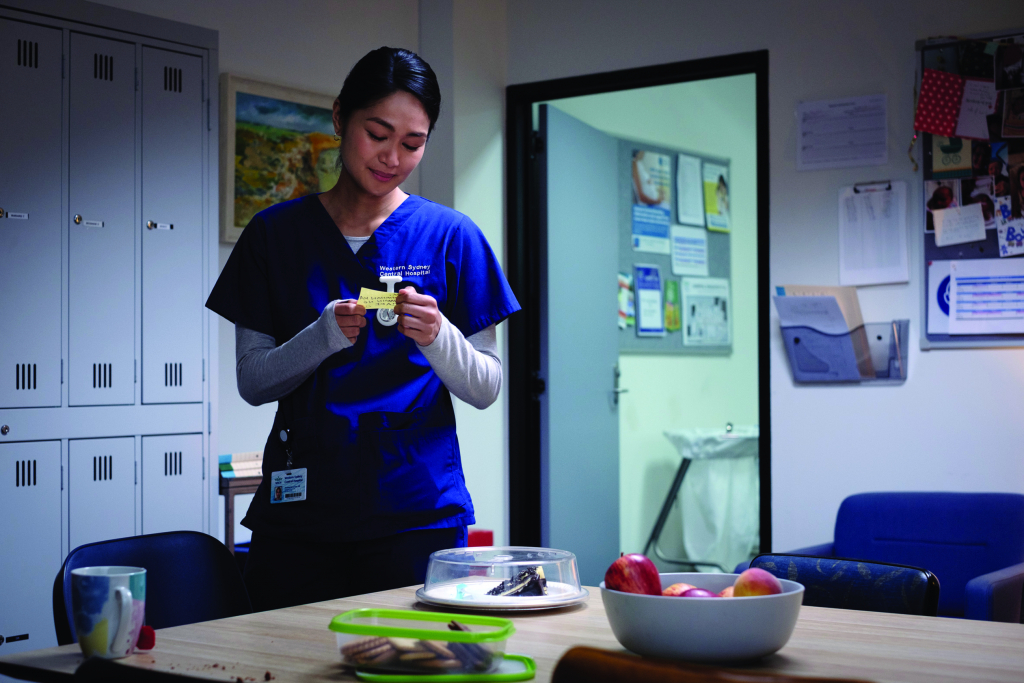
There is just one vignette of the eight that lags a little, in which the writing feels cumbersome and obvious, the acting is clunky, and the tone veers a little too close to student-film territory. But aside from this, the film moves at an absorbing pace, offers plenty of nuance and exhibits a gentle sense of tribute to its characters, who – despite the odd heinous action, such as stealing a baby – are for the most part sympathetic.
Another point worth making about Here Out West relates to the COVID-19 pandemic. With its characters, cast, writers and directors all holding heritage from various corners of the globe, the film is a welcome reminder of the international context surrounding Australia, specifically in terms of how the country operates in dialogue and cooperation with geopolitical movements and upheavals in other regions (many characters in the film are either economic migrants or refugees). Because of border closures over the last two years, it has often felt like public and social life here has been festering in its own cultural Petri dish – a veritable hermit kingdom. The film, for this viewer at least, represents the fact that Australia can and does interact with – and have a voice in – the international community. And that is somewhat comforting. There is, incidentally, no indication of the pandemic’s existence in Here Out West, although production took place across 2020–2021. While the filmmakers couldn’t possibly have foreseen the Sydney COVID-19 outbreak and lockdown of mid 2021 – which had its epicentre in suburbs such as Fairfield, Bankstown and Liverpool[4]See Warren Barnsley, ‘Sydney’s Fairfield, Liverpool and Canterbury-Bankstown LGAs Identified as New COVID Focus’, 7NEWS, 7 July 2021, <https://7news.com.au/lifestyle/health-wellbeing/sydneys-fairfield-liverpool-and-canterbury-bankstown-identified-as-new-covid-focus-c-3332343>, accessed 2 March 2022. – this radical shift in circumstances shows how hard it can be for even a film as of-the-moment as this to fully capture the rapidly changing landscape it’s seeking to represent.
Western Sydney is in the process of immense transformation. It is forecast that the population of the region will have grown by almost one million since 2011 within the next decade, and that, by 2031, Western Sydney will be home to 50 per cent of the city’s population.[5]See NSW Government Department of Planning and Environment, ‘Western Sydney Population, Household and Dwelling Projections’, July 2014, p. 1, <https://www.planning.nsw.gov.au/~/media/510E1962E5AD403392315A6AAA8A5E8D.ashx>, accessed 22 February 2022. The building of Sydney’s second airport at Badgerys Creek is also changing the character of the area, as are the truly brutal summers that may get worse as climate change progresses.[6]See Hannah Melville-Rea, ‘Western Sydney Will Swelter Through 46 Days Per Year over 35°C by 2090, Unless Emissions Drop Significantly’, The Conversation, 17 February 2022, <https://theconversation.com/western-sydney-will-swelter-through-46-days-per-year-over-35-c-by-2090-unless-emissions-drop-significantly-177056>, accessed 22 February 2022. These suburbs, therefore, are at the forefront of change, where key questions about how communities will live and work in the future are immediate concerns. Many critical responses to Here Out West – a tremendous work, and perhaps even a landmark moment in Australian film – have rightly emphasised that it gives a voice to those outside our mainstream conversations, on the fringes of our public sphere.[7]See, for example, Sukhmani Khorana, ‘Here Out West: A Film That Centres Western Sydney Through Tales of Marginality’, The Conversation, 7 February 2022, <https://theconversation.com/here-out-west-a-film-that-centres-western-sydney-through-tales-of-marginality-176449>, accessed 22 February 2022. But, in the future, these stories may well become the quintessential Australian experiences – and, hopefully, Here Out West heralds a new wave in these lives being rendered on the big screen.
Endnotes
| 1 | See ‘Western Sydney (LGA) Community Profile’, .id website, <https://profile.id.com.au/cws>, accessed 22 February 2022. |
|---|---|
| 2 | Annabel Davis, Sheila Jayadev & Bree-Anne Sykes, ‘Producers’ Statement’, in Co-Curious & Emerald Productions, Here Out West press kit, 2021, p. 5. |
| 3 | Confirmed to author by ABC Audiences representative via email. |
| 4 | See Warren Barnsley, ‘Sydney’s Fairfield, Liverpool and Canterbury-Bankstown LGAs Identified as New COVID Focus’, 7NEWS, 7 July 2021, <https://7news.com.au/lifestyle/health-wellbeing/sydneys-fairfield-liverpool-and-canterbury-bankstown-identified-as-new-covid-focus-c-3332343>, accessed 2 March 2022. |
| 5 | See NSW Government Department of Planning and Environment, ‘Western Sydney Population, Household and Dwelling Projections’, July 2014, p. 1, <https://www.planning.nsw.gov.au/~/media/510E1962E5AD403392315A6AAA8A5E8D.ashx>, accessed 22 February 2022. |
| 6 | See Hannah Melville-Rea, ‘Western Sydney Will Swelter Through 46 Days Per Year over 35°C by 2090, Unless Emissions Drop Significantly’, The Conversation, 17 February 2022, <https://theconversation.com/western-sydney-will-swelter-through-46-days-per-year-over-35-c-by-2090-unless-emissions-drop-significantly-177056>, accessed 22 February 2022. |
| 7 | See, for example, Sukhmani Khorana, ‘Here Out West: A Film That Centres Western Sydney Through Tales of Marginality’, The Conversation, 7 February 2022, <https://theconversation.com/here-out-west-a-film-that-centres-western-sydney-through-tales-of-marginality-176449>, accessed 22 February 2022. |
